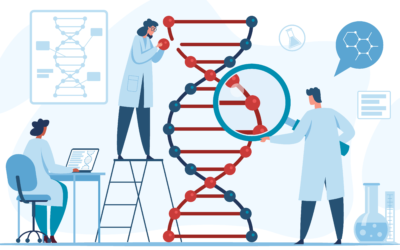The evolution of medicine over the centuries has been marked by significant milestones that have transformed healthcare practices and outcomes. This article explores the journey from Medicine 1.0, through Medicine 2.0, to the emerging paradigm of Medicine 3.0. Each phase represents a shift in understanding, technology, and approach to health and disease management.
Table of Contents
Medicine 1.0: The Dawn of Medical Practice
Medicine 1.0 refers to the era of medicine that spanned from the dawn of human civilization until the late 19th century. This period was characterized by rudimentary medical practices that were largely ineffective by today’s standards. Here are some key aspects:
- Primitive Understanding: Medicine 1.0 was based on limited understanding of human anatomy and disease processes. Treatments were often based on superstition, religious beliefs, and trial-and-error methods.
- Lack of Scientific Methodology: The absence of a scientific framework meant that medical practices were not evidence-based. Theories such as the imbalance of bodily humors were prevalent.
- High Mortality Rates: Life expectancy was low, with many deaths resulting from infectious diseases, childbirth complications, and injuries. The average lifespan was around 30-40 years.
Despite its limitations, Medicine 1.0 laid the groundwork for future advancements by accumulating knowledge and fostering curiosity about the human body and diseases.
Medicine 2.0: The Age of Scientific Medicine
The transition to Medicine 2.0 began in the late 19th century, driven by scientific discoveries and technological innovations. This era brought about a revolution in medical practice:
- Scientific Methodology: The introduction of the scientific method allowed for systematic investigation and validation of medical theories. This led to the development of evidence-based practices.
- Technological Advancements: Innovations such as the microscope, germ theory, and antiseptics transformed medical diagnostics and treatments. The discovery of antibiotics further revolutionized healthcare by effectively combating infectious diseases.
- Increased Life Expectancy: With improved sanitation, vaccination, and medical interventions, life expectancy doubled within a few generations. Medicine 2.0 successfully addressed many of the communicable diseases that plagued earlier societies.
Medicine 2.0 established the foundation of modern medicine, focusing on treating diseases and extending lifespan. However, it also highlighted the need for a more comprehensive approach to health.
Medicine 3.0: A New Paradigm in Healthcare
Medicine 3.0 represents a shift towards a more holistic and personalized approach to healthcare. It seeks to address the limitations of Medicine 2.0 by emphasizing prevention, healthspan, and individualized care:
- Prevention Over Treatment: Medicine 3.0 prioritizes the prevention of chronic diseases through early intervention and lifestyle modifications. This approach aims to reduce the prevalence and impact of conditions such as cardiovascular diseases, cancer, and neurodegenerative disorders.
- Focus on Healthspan: Unlike its predecessors, Medicine 3.0 places equal emphasis on healthspan—the quality of life and functional health—as on lifespan. This involves addressing physical, cognitive, and emotional well-being.
- Personalized Medicine: Advances in genomics and data analytics enable tailored healthcare solutions based on individual genetic profiles and lifestyle factors. This personalized approach enhances treatment efficacy and patient outcomes.
Medicine 3.0 is not intended to replace Medicine 2.0 but to complement it by shifting resources and attention towards preventive care and health optimization.
The Role of Medicine 3.0 in Longevity
As discussed by Peter Attia, Medicine 3.0 plays a crucial role in enhancing longevity by focusing on both lifespan and healthspan. Here are some strategies associated with this new paradigm:
- Lifestyle Interventions: Emphasizing nutrition, exercise, sleep, and stress management as key components of health maintenance and disease prevention.
- Early Detection and Screening: Utilizing advanced screening techniques for early detection of diseases, allowing for timely and effective interventions.
- Integration of Technology: Leveraging digital health tools and wearable technologies to monitor health metrics and provide real-time feedback for personalized health management.
By addressing the root causes of chronic diseases and promoting a proactive approach to health, Medicine 3.0 aims to extend not only the years of life but also the quality of those years.
Conclusion
The evolution from Medicine 1.0 to Medicine 3.0 reflects humanity’s journey towards a deeper understanding of health and disease. Each phase has contributed to the advancement of medical knowledge and practices, ultimately leading to improved health outcomes and longevity. As we embrace the principles of Medicine 3.0, we move closer to a future where healthcare is not only about treating illness but also about fostering a life of vitality and well-being.





0 Comments